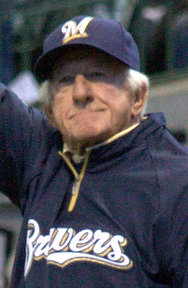Slowly, but surely, I have been continuing my trek through The Simpsons, and I am up to the show’s eighteenth season. In this season, the show highlights the ridiculous levels to which some fans take their obsession even with little league baseball.
The episode starts with Bart Simpson, shortstop for the Springfield Isotots (awesome little league name, by the way), catching a fly ball for the final out of a game, thus earning his team a spot in the championship game. Proud mom Marge Simpson goes out the next day to buy a new dress to wear to the game, bragging to the sales lady about what a star her son is on the field.
 The championship game brings a matchup of Springfield against Shelbyville, and Springfield find themselves leading 5-2 in the bottom of the ninth with two outs. Shelbyville, however, has the bases loaded. When their batter hits the ball that could win or lose the game, it heads towards Bart. He drops an easily caught pop up and repeatedly fails to pick it up, kicking it around the field, allowing all four runners to score and giving Shelbyville the victory.
The championship game brings a matchup of Springfield against Shelbyville, and Springfield find themselves leading 5-2 in the bottom of the ninth with two outs. Shelbyville, however, has the bases loaded. When their batter hits the ball that could win or lose the game, it heads towards Bart. He drops an easily caught pop up and repeatedly fails to pick it up, kicking it around the field, allowing all four runners to score and giving Shelbyville the victory.
The entire crowd turns on Bart and starts throwing beer at him, but the humiliation doesn’t end there. Bart’s error even makes it into the newspapers, and the town continues to rail on him for losing the game. Bart’s sister Lisa tries to cheer him up by taking to see an old baseball star (Joe La Boot) who dropped a critical fly ball once and still went on to be rich and famous. Unfortunately, it only makes Bart feel worse, even causing a rare burst of tears, after La Boot learns who he is and makes everyone in the building boo Bart yet again.
The next morning Springfield wakes up to find that a self-deprecatory Bart has spray-painted “I HATE BART SIMPSON” all over town. The townspeople gather under the water tower, where Bart is found painting the message yet again. Driven by taunts from the crowd, Bart lets go of the rope he dangles from, in an attempt to commit suicide. La Boot, feeling remorseful, tries to catch him, but trips and misses.
Bart survives the fall, but ends up in the hospital. Still unrelenting, the crowd now starts booing outside of Bart’s hospital window. Finally, Marge snaps, and she storms outside to confront the crowd, telling them they should be ashamed of themselves for treating a child in such a cruel, abusive manner. Furthermore, she calls everybody hypocrites since they themselves probably had similar experiences when they were younger and haven’t gone on to accomplish anything of substance.
Finally, the crowd shows a bit of remorse. Lisa suggests replaying the game (unofficially, but without Bart knowing) to give Bart another opportunity and to help bring his self-esteem back up, and the crowd agrees. Bart is told the game is getting replayed due to the umpire using a non-regulation brush to clean the plate in the first attempt. After 78 tries (with a variety of reasons made up as to why that final inning needed to be replayed), Bart finally catches the ball, “winning” the game.












